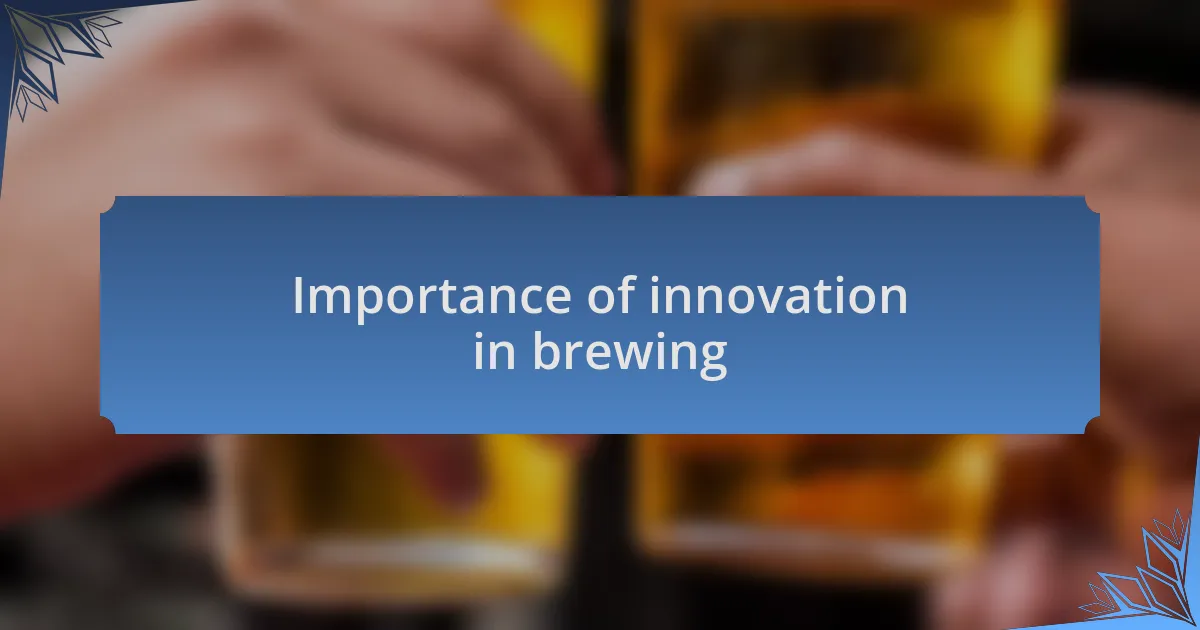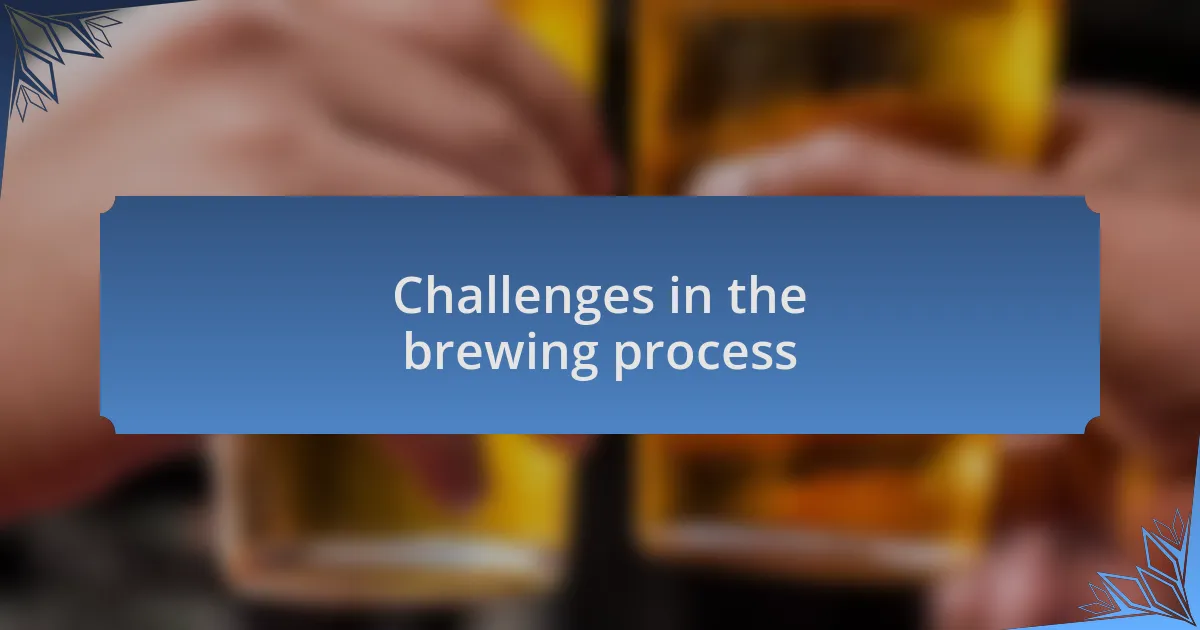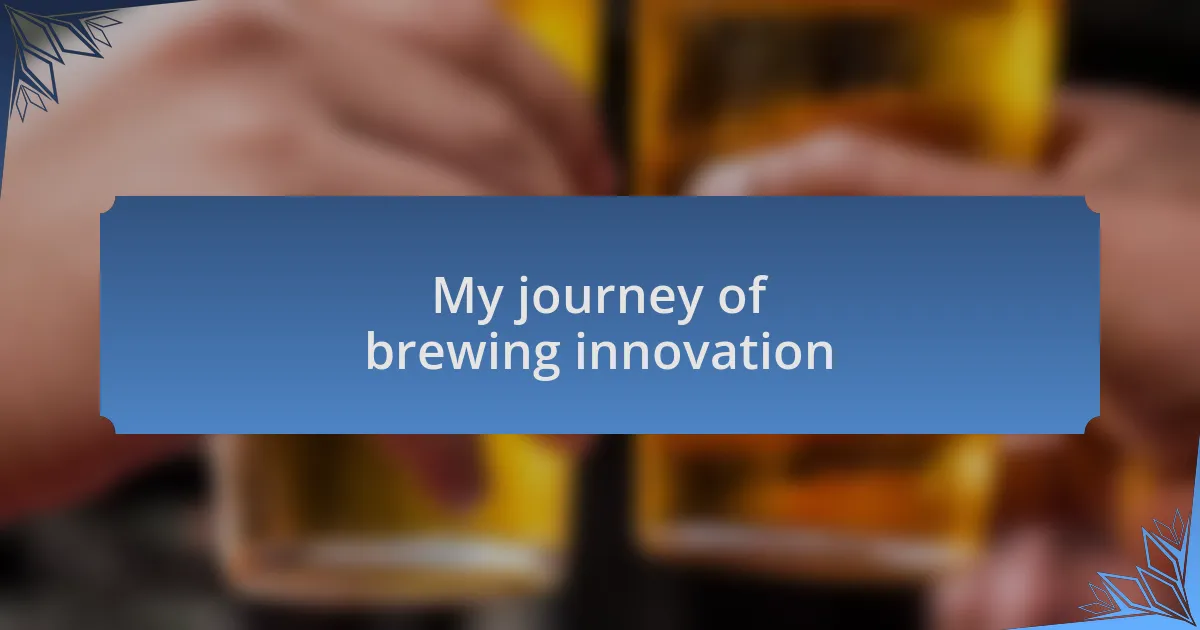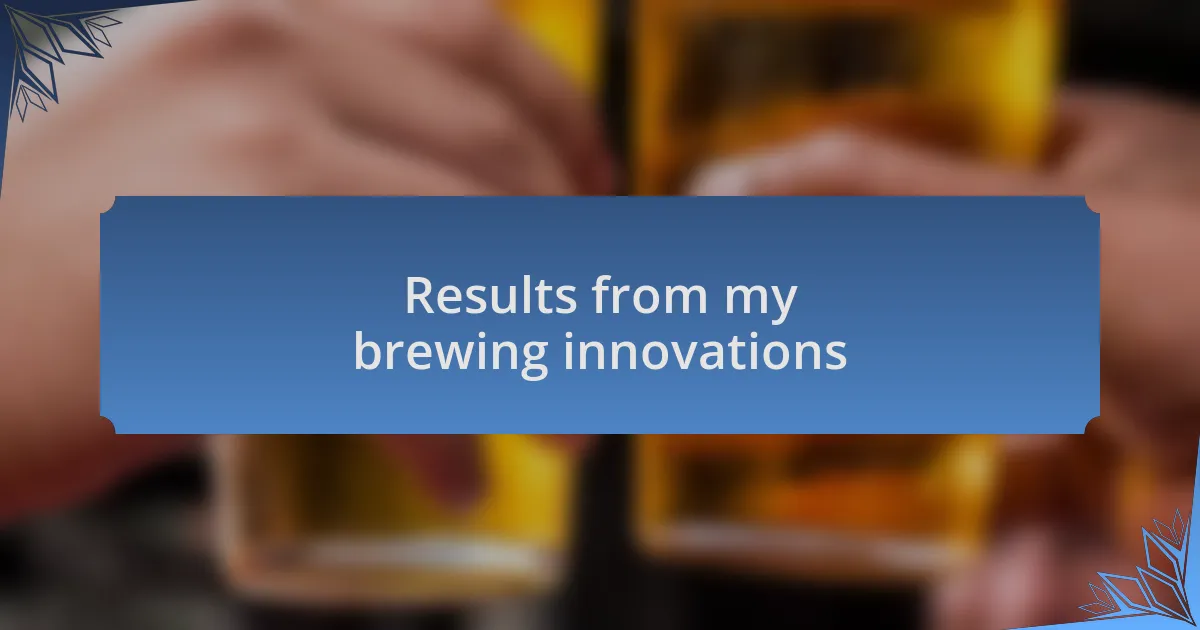Key takeaways:
- Craft beer festivals foster community connections and allow brewers to share their passion, enhancing appreciation for brewing artistry.
- Innovation in brewing, such as experimenting with unique ingredients and temperature control, is crucial for creating diverse and exciting flavors.
- Traditional brewing methods emphasize craftsmanship and local influence, connecting brews to their origins and cultures.
- Collaboration with local farmers can enhance the quality and authenticity of beers, showcasing regional ingredients and stories.

Understanding craft beer festivals
Craft beer festivals are vibrant celebrations of creativity and culture in the brewing world. I remember my first festival—it was overwhelming yet exhilarating to sample a kaleidoscope of flavors all in one place. The atmosphere buzzed with excitement as fellow enthusiasts shared their discoveries, making it feel like a communal journey through craft brewing.
At a craft beer festival, you’re not just tasting beer; you’re connecting with the stories and passion behind each brew. Have you ever tried to understand what makes a particular beer special? I’ve found that talking to brewers at these events revealed the hard work and dedication that goes into every pint. Their eyes light up when discussing their craft, which adds a personal touch to the experience and deepens my appreciation for the art of brewing.
These festivals often showcase local artisans and promote a sense of community among craft beer lovers. I recall chatting with a brewer who explained how he incorporates local ingredients, which sparked my curiosity about the connection between place and flavor. It made me realize that each sip tells a story, and being part of that conversation feels incredibly rewarding.

Importance of innovation in brewing
Innovation in brewing is essential for keeping the craft beer scene vibrant and exciting. I often find myself reflecting on how even small changes in ingredients or techniques can lead to remarkable new flavors. Have you ever tasted a beer that surprised you? That element of surprise, born from innovation, is what keeps us coming back for more.
The process of experimenting with different styles and ingredients allows brewers to push boundaries and redefine our expectations of beer. I recall a time when I stumbled upon an experimental sour ale infused with tropical fruits. It opened my eyes to a whole new world of possibilities within brewing. Each innovative brew not only showcases a brewer’s creativity but also invites drinkers to explore and expand their palates.
Moreover, innovation fosters a sense of community among brewers and enthusiasts alike. When I attended a recent festival, I was thrilled to hear several brewers share their journeys of trial and error in crafting new recipes. Their passion for collaboration and knowledge-sharing fueled everyone’s enthusiasm, reminding me that the best brews often emerge from the willingness to take risks and think outside the box.

Overview of traditional brewing methods
Brewing has deep roots, with traditional methods often reflecting centuries of craft and culture. The basic steps generally include mashing, boiling, and fermentation, each stage serving as a canvas for the brewer’s artistry. I remember the first time I watched a brew session unfold; the heavy aroma of malt and hops filled the air, and it struck me how much patience and precision these age-old techniques demand.
Historically, many brewers have relied on natural ingredients sourced from their local environments. This reliance creates unique flavors that often define regional beers. I often wonder how different my local craft scene would be without the influence of local water profiles and flora. It’s fascinating to see how specific strains of yeast or particular hop varieties can weave an intricate narrative through each pint, telling a story that ties back to the land and the people behind it.
As I delved deeper into the world of traditional brewing, I began to appreciate the craftsmanship involved. There’s something almost meditative about watching the bubbling wort during the boiling process, a reminder that every brew is a labor of love. Have you ever noticed how traditional methods can yield surprisingly complex flavors, even without the bells and whistles of modern technology? This aspect of brewing connects us to the past while still keeping the future bright with the promise of innovation.

Challenges in the brewing process
The brewing process is fraught with challenges that can make or break a batch. For example, I once miscalculated the water temperature during mashing, which led to an underwhelming extraction of sugars. It’s amazing how a slight misstep can shift the entire flavor profile, demonstrating just how precise the brewing process needs to be.
Fermentation is another area where challenges arise, often involving unpredictable yeast behavior. I remember a particular batch that went rogue; the yeast was so active that it overflowed, creating a small foamy mess in my fermentation vessel. Experiences like this taught me that monitoring fermentation closely is essential, as a happy yeast means a happy brew.
Finally, there’s the issue of ingredient consistency—one batch of malt can produce entirely different flavors from another, depending on the harvest. During my early brewing days, I didn’t grasp how much that could influence the final product. It’s a constant reminder that every element in brewing has its role, and even small variations can lead to unexpected results, both good and bad. Have you encountered similar hurdles in your brewing journey?

My journey of brewing innovation
I embraced innovation in my brewing process when I started experimenting with unusual ingredients. I vividly recall the moment I decided to add hibiscus flowers to a pale ale; the vibrant color and tartness surprised me. It was a leap of faith that not only enhanced the visual appeal but also opened up a new world of flavors, prompting me to constantly seek ways to incorporate unexpected elements into my brews. Isn’t it exhilarating to push the boundaries of traditional brewing?
As my confidence grew, I delved into the science behind fermentation temperature control. One time, I invested in a temperature-controlled fermentation chamber, and the difference was remarkable. I experienced firsthand how precise temperature manipulation can unlock delightful flavor profiles and aromas. Have you ever considered how much of an impact temperature can have on your final product? I learned that understanding the science behind brewing can indeed transform an average batch into something truly memorable.
Collaboration with local farmers was another turning point in my brewing journey. By sourcing fresh, seasonal ingredients, I not only aided local businesses but also created brews that told a story about the region. I remember crafting a pumpkin ale using local squash – the flavor was richer and more authentic than anything I had ever brewed before. It made me realize that innovation often lies in partnerships and being open to the community around us. How do your local resources inspire your brewing?

Results from my brewing innovations
The results of my brewing innovations have been nothing short of transformative. For instance, after introducing those unexpected ingredients, I found that my beers began to attract a more diverse audience at festivals. People would come up to me, excited to try a hibiscus pale ale or a lavender-infused IPA, and their reactions filled me with pride. Isn’t it incredible how a single ingredient can change the entire perception of a beer?
Temperature control also had an immense impact on the quality of my brews. I recall a particularly enlightening tasting session where several of my friends sampled two batches of the same beer: one fermented at a controlled temperature and the other at ambient temperature. The difference in taste was palpable— the controlled batch had a crispness and complexity that left everyone raving. Have you ever experienced the contrast between two approaches to the same process and noticed how techniques can dramatically influence outcomes?
Finally, collaborating with local farmers brought a refreshing authenticity to my beers. One time, I combined freshly picked strawberries from a nearby farm into a summer wheat beer. The sweet, sun-ripened flavor was unlike anything I had produced before, and it sparked conversations about local ingredients and the stories they carried. Wouldn’t it be amazing if every brew could encapsulate the essence of its surroundings? This experience solidified my belief that innovation is deeply rooted in community and shared resources.